SPRING 2023
UPWARD AND ONWARD
Naming endowment propels school's trajectory of innovation and growth
 PUBLISHED BY THE USC MANN SCHOOL OF PHARMACY AND PHARMACEUTICAL SCIENCES
PUBLISHED BY THE USC MANN SCHOOL OF PHARMACY AND PHARMACEUTICAL SCIENCES
EDITOR IN CHIEF
Michele Keller
MANAGING EDITOR
Susan L. Wampler
CONTRIBUTING WRITERS
Chinyere Cindy Amobi
Michele Carroll
Dora Dalton
Andrea Diaz
Stephanie Hedt
Leigh Hopper
Paul McQuiston
Stan Wedeking
David Zong
DESIGN
Warren Group | Studio Deluxe
PHOTOGRAPHY
Chris Chinn
Steve Cohn
Andrea Diaz
Luis Larios
Isaac Mora
Gus Ruelas
COVER ILLUSTRATION
Mark Smith
© 2023 BY THE UNIVERSITY OF SOUTHERN CALIFORNIA
MANN SCHOOL
Letters to the editor, questions, comments, address changes, requests to be added/ removed from the mailing list and all other inquiries should be addressed to:
Michele Keller
Chief Communications Officer
USC Mann School of Pharmacy and Pharmaceutical Sciences
1985 Zonal Avenue – PSC 700 Los Angeles CA 90089-9121
kellermi@usc.edu
323-442-3497
MANN.USC.EDU
DEAN
Vassilios Papadopoulos, DPharm, PhD, DSc (hon)
BOARD OF COUNCILORS
David Neu, Chair
Anil “Neil” Badlani
Melvin F. Baron
Gale Bensussen
Danielle C. Colayco
Daniel Gil
Dong Koo (D. K.) Kim
Dianne Kwock
Ann Young Lee
Vinson Lee
Sohail Masood
David Meek
Shushma Patel
Chao Peng
William Pih
Robert Popovian
Denis Portaro
Jacque J. Sokolov
Khanh-Long (Ken) Thai
Kelly Wilder
William A. Heeres, Chair Emeritus
One of the top pharmacy schools nationwide and the highest-ranked private school, the USC Mann School continues its century-long reputation for innovative programming, practice and collaboration.
Founded in 1905 as the USC College of Pharmacy, the school was known as the USC School of Pharmacy from the mid-20th century until 2022, when it received a $50 million endowment and was renamed on behalf of inventor and entrepreneur Alfred E. Mann.
The school created the nation’s first Doctor of Pharmacy program, the first clinical pharmacy program, the first clinical clerkships, the first doctorates in pharmaceutical economics and regulatory science,
and the first PharmD/MBA dual-degree program, among other innovations in education, research and practice. The USC Mann School is the only private pharmacy school on a major health sciences campus, which facilitates partnerships with other health professionals as well as new breakthroughs in care. Uniquely, it owns and operates four pharmacies, with a fifth coming in early 2024.
The school is home to the D. K. Kim International Center for Regulatory Science at USC, the Titus Center for Medication Safety and Population Health, and the Center for Quantitative Drug and Disease Modeling, and is a partner in the USC Leonard D. Schaeffer Center for Health Policy &
Economics, the USC Institute for Addiction Science, the USC Ginsburg Institute for Biomedical Therapeutics, the Southern California Clinical and Translational Science Institute, the USC Center for Neuronal Longevity, and the USC Center for Drug Discovery, Delivery and Development. The Mann School pioneered a national model of clinical pharmacy care through work in safety-net clinics throughout Southern California and is a leader in comprehensive medication management. Results magazine, published semi-annually, highlights some of the school’s latest advances and achievements, as well as the faculty, students, alumni and donors who make this work possible.
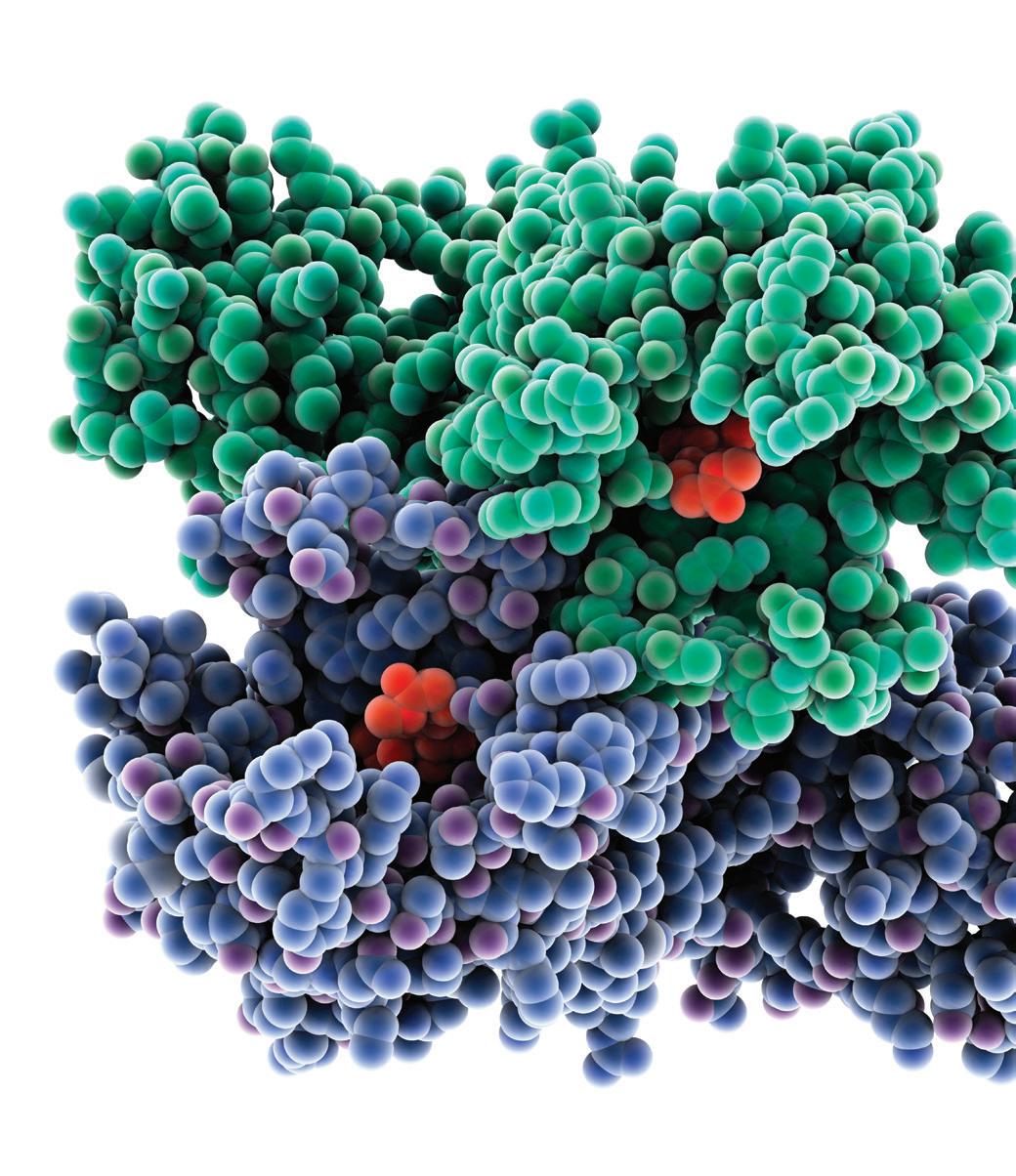 ABOUT THE USC MANN SCHOOL OF PHARMACY AND PHARMACEUTICAL SCIENCES
ABOUT THE USC MANN SCHOOL OF PHARMACY AND PHARMACEUTICAL SCIENCES
A New Era
It was a tremendous honor to celebrate the naming of our school in memory of the late Alfred E. Mann in February. Throughout his life, he took on big, intractable challenges and met them with inspired solutions. He was driven by a natural curiosity, a pioneering spirit and the desire to challenge the status quo. His ultimate aim was to improve human health.
Our own parallel mission is to advance health through innovation—and transform the face of pharmacy by leading the convergence of science, healthcare and policy.

Another vitally important component of our name change is the addition of “Pharmaceutical Sciences.” The school is now known as the Alfred E. Mann School of Pharmacy and Pharmaceutical Sciences—and that reflects a significant difference.
For many years, our programs have spanned the pharmaceutical continuum—from groundbreaking discoveries and novel regulatory approaches to meaningful health policy reforms and collaborations in medication management and chronic disease prevention. Broadening the school’s name more accurately reflects the breadth of our activities and the role our graduates will play in this dynamic field.
We recently hired a full-time, on-site wellness counselor to help students manage stress, build resilience and access supportive services to help them thrive. In these pages, you will also read about our inaugural Southern California Outreach for Pharmacy Education (SCOPE) Saturday Academy. Developed by USC Mann students, SCOPE mentors underrepresented high schoolers and introduces them to career opportunities in pharmacy and pharmaceutical sciences.
Our faculty members continue to innovate and lead as well. Clay C. C. Wang and collaborators have created a novel method for transforming plastic trash into various useful products—including pharmaceuticals. Serghei Mangul has received a grant of more than $3.9 million from the National Institutes of Health (NIH) to expand diversity in the study of human immunology. Erin Trish recently testified before a U.S. Senate committee on her research into the opaque pricing practices of pharmacy benefit managers. And Dima Qato’s interdisciplinary team has developed an interactive mapping tool that identifies pharmacy shortage areas throughout the U.S. Qato has also received a new $1.6 million NIH grant to advance equitable access to medicines.
We continue our progress on building a new South Los Angeles Pharmacy, which will eliminate a pharmacy desert near USC’s University Park Campus when it opens next year. As you’ll see on the inside back cover of this issue, we are creating a Founders Wall in recognition of our commitment to community health. Numerous generous alumni have already stepped up to be part of this initiative, and we hope you will join us.
Like Alfred Mann, our faculty, students and alumni are innovative and nimble leaders with the skills and dedication to adeptly shift focus to tackle new societal challenges as they arise. We know they will continue to be inspired by his legacy as they further his, and his namesake school’s, aim of improving human health.

Thank you for your continued partnership as we enter this new era for the USC Mann School.
Vassilios Papadopoulos, DPharm, PhD, DSc (hon) Dean, USC Mann School John Stauffer Decanal Chair
Sciences

1 RESULTS SPRING 2023
in Pharmaceutical
Computer model showing the structure of an opioid receptor (green, blue) with a morphine analog (orange). Learn more about the school’s efforts to combat opioid addiction on pages 8 and 29.
Broad Spectrum
4 / NEW UNIVERSITY PARK PHARMACY IN THE WORKS
5 / MAPPING PHARMACY DESERTS
6 / CLAY WANG: TRANSFORMING PLASTIC WASTE
8 / HEIGHTENING AWARENESS OF OPIOID ABUSE
9 / PREVENTING HOSPITAL COMPLICATIONS
10 / CDC’S WRIGHT TO SPEAK AT COMMENCEMENT
10 / ANN YOUNG LEE JOINS BOARD OF COUNCILORS
11 / SHEDDING LIGHT ON PHARMACY BENEFIT MANAGER PRACTICES
Cover Story
12 / PASSING THE BATON: SCHOOL NAMED FOR ALFRED E. MANN
Giving
18 / USC MANN SCHOOL MARKS A NEW ERA
Alumni
20 / DANIELLE COLAYCO: COLORING IN THE LINES
21 / JACK SIMITYAN: COMBINING CONVENIENCE WITH SAFETY
22 / CLASS NOTES
Faculty
24 / MANGUL AWARDED $3.9M NIH GRANT
25 / REFORMING THE DIALYSIS MARKET
25 / DEAN APPOINTED HONORARY INVESTIGATOR
25 / NEW FACES
26 / SAVING MONEY BUT INCREASING RISK: NOACS
26 / FACULTY BOOKS
26 / CAMARERO RECEIVES LUNG CANCER RESEARCH GRANT
27 / ELUCIDATING COVID’S IMPACT
27 / QATO GARNERS $1.6M NIH GRANT

Students
28 / PERFECT BALANCE: STUDENT PERFORMS AT WHITE HOUSE
29 / REVOLUTIONIZING ADDICTION TREATMENT AND TRAINING
30 / OPENING PATHWAYS FOR UNDERSERVED STUDENTS
31 / IMPROVING WELLNESS ON CAMPUS
32 / PHOTO SHOP
IBC / SOUTH LOS ANGELES PHARMACY FOUNDERS WALL
2 USC MANN SCHOOL Contents
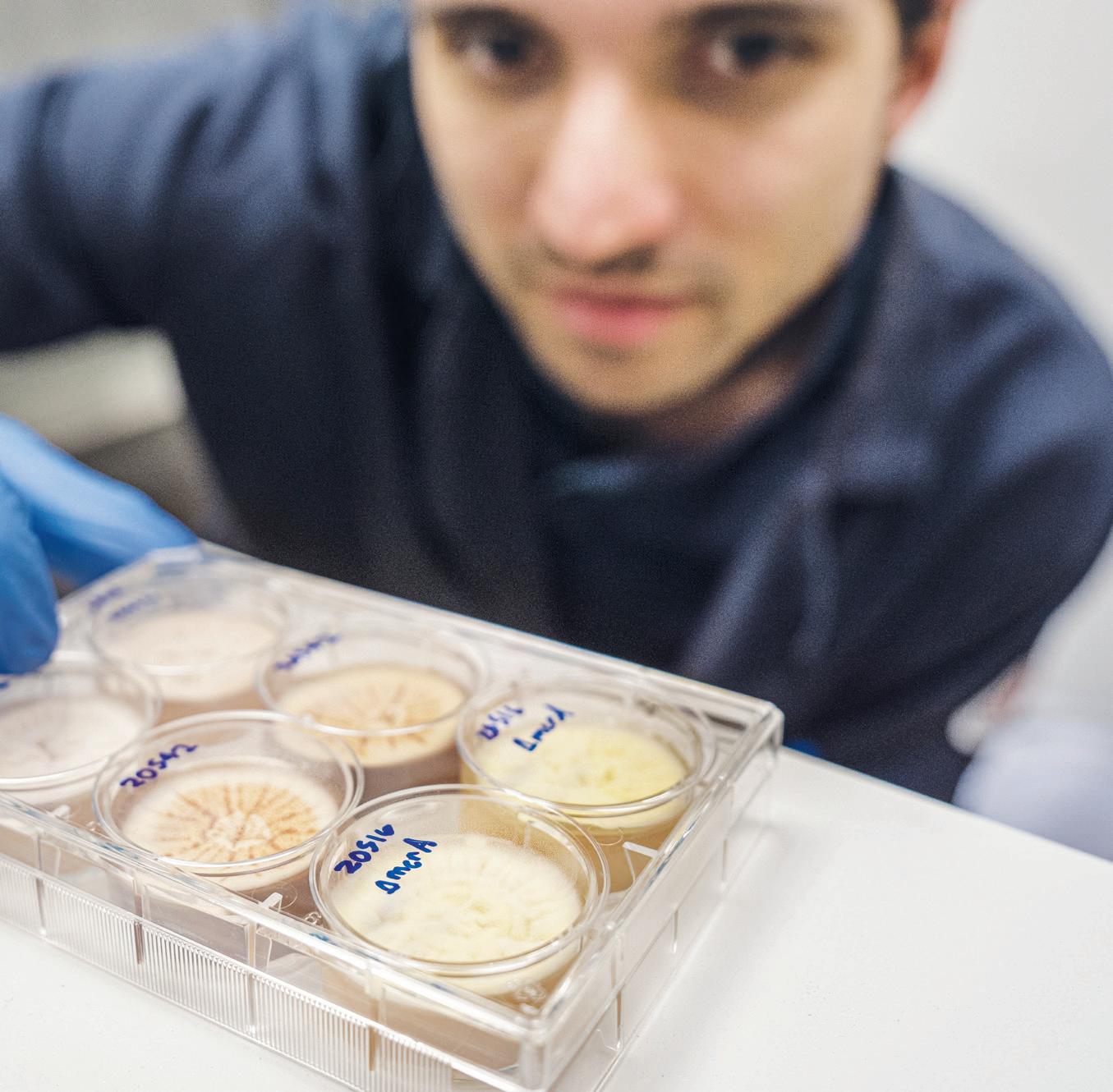
3 RESULTS SPRING 2023
PhD student Christian Rabot is a key member of the team that developed a novel method to transform plastic trash into pharmaceuticals and other products. Rabot works in the laboratory of Clay C. C. Wang, chair of the USC Mann Department of Pharmacology and Pharmaceutical Sciences. See story, page 6.
Mapping Pharmacy Deserts
Dima Qato spent more than a decade working as a community pharmacist and public health advocate in Chicago’s underserved refugee and immigrant communities before joining the Mann School in fall 2020.
Through her experiences and public health training, Qato—the daughter of a pharmacist—views pharmacy access as a human rights issue and a frequently overlooked piece of the healthcare access puzzle.

“The World Health Organization has considered geographic access to pharmacies one of the key determinants of access to essential medicines for decades,” says Qato, a senior fellow at the USC Schaeffer Center for Health Policy & Economics and the Hygeia Centennial Chair at the Mann School. “Despite the important role of pharmacies in providing essential medicines to the community, 15 years ago, when I started my PhD, no one really considered pharmacy access—not even people investigating health equity and disparities in medication adherence. It wasn’t part of the conversation.”
Today, an estimated 100 million Americans lack convenient access to a pharmacy. To call attention to the issue, Qato coined the term “pharmacy desert.”
Pharmacy Access Initiative
Her latest project is an interactive, nationwide mapping tool showing the location of every pharmacy in the United States and which neighborhoods fall into the category of pharmacy deserts, or pharmacy shortage areas—as well as those at risk of falling into that category. The Pharmacy Access Initiative is a collaboration of the Mann School, the Schaeffer Center, the Spatial Sciences Institute at the USC Dornsife College of Letters, Arts and Sciences, and the National Community Pharmacists Association, which represents independent pharmacies across the country.
The mapping tool identifies nearly 1 in 4 neighborhoods—representing millions of Americans—as pharmacy shortage areas. A shortage area is defined as one where the distance to a pharmacy is greater than 10 miles in a rural area, 2 miles in a suburban area, 1 mile for urban areas and a half-mile in neighborhoods that are low income and have low vehicle ownership.
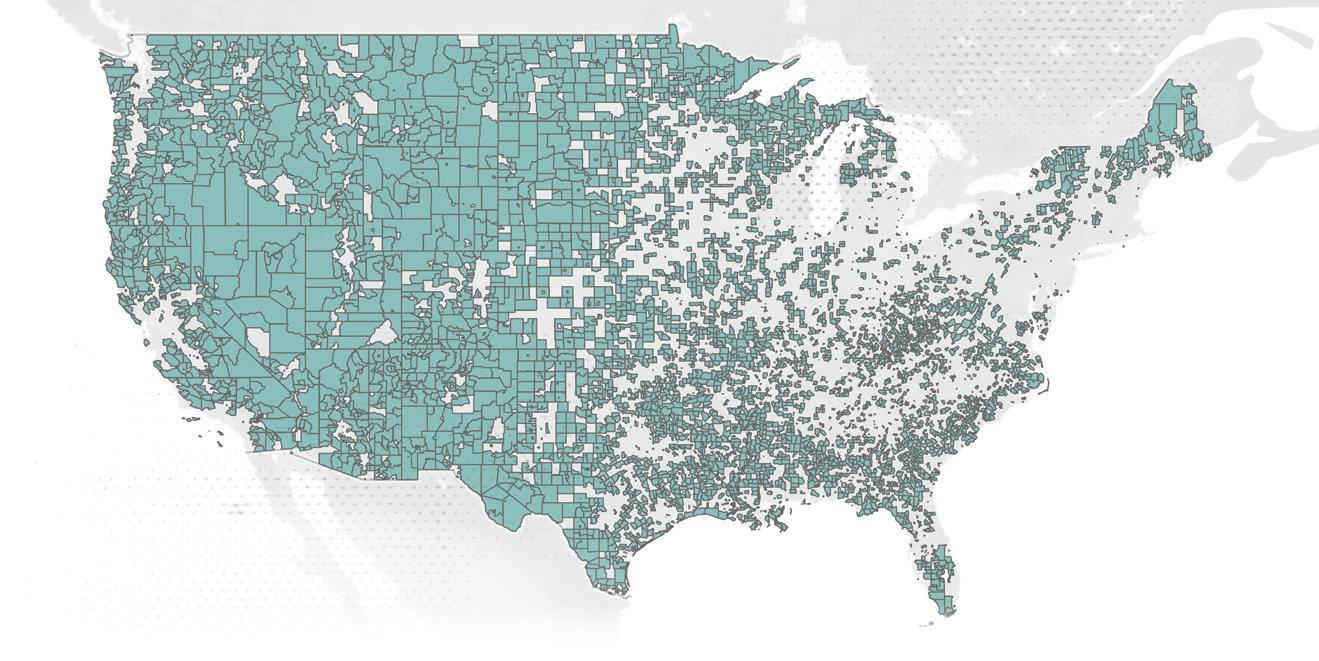
Prior research by Qato found that one-third of neighborhoods in the largest U.S. cities—including Los Angeles—are pharmacy deserts. The most affected neighborhoods are segregated Black or Latino communities within these cities.
Fostering Health Equity
Qato hopes the mapping tool will inform federal and state policy changes that improve health equity.
For example, Medicare Part D and Medicaid health plans have pharmacy networks that often exclude independent (and some chain) pharmacies that largely serve Black and Latino populations. Qato says such policies are a form of structural racism that forces historically marginalized populations to travel farther to their nearest pharmacy to fill their medications. Excluding pharmacies from networks also leads to the underutilization—and, often, closure—of pharmacies located in these neighborhoods, she notes.
“It’s also important to ensure that local pharmacies are actually stocking essential medicines and offering essential services they are authorized to provide,” Qato says.
The map could also provide a framework to promote accountability—including in the regulation of pharmacy benefit managers, who play an important role in low and inequitable pharmacy reimbursement and pharmacy closures.
The mapping tool will be rolled out via training webinars for stakeholders in the coming months.
5 RESULTS SPRING 2023
The aqua color highlights rural pharmacy shortage tracts in 2020.
Dima Qato
Transforming Plastic Waste
Catalina Island, located 22 miles off the coast of Los Angeles, once collected Hollywood royalty, smugglers and silver miners. Now, it is a collection point of the Great Pacific Garbage Patch, an enormous spread of microplastics with accumulated larger debris that stretches more than 1.6 million square kilometers.
Up to 10 million metric tons of plastic end up in our oceans each year and, since the substance does not naturally degrade on a reasonable timescale, its accumulation may outweigh all the fish in the sea by 2050. Current methods to recycle or remanufacture polyethylene are also not cost-effective, something chemical recycling might alleviate.
To address this urgent challenge, Clay C. C. Wang, chair of the USC Mann Department of Pharmacology and Pharmaceutical Sciences, and collaborators at the USC Dornsife College of Letters, Arts and Sciences have devised an innovative method for transforming plastic trash into a variety of useful products—including pharmaceuticals—with unprecedented efficiency.
“If you look at the biological cycle, that efficiency is very exciting because the process will be cost-sensitive,” Wang says. “We’re going to make the products in bulk quantities.”

So far, the team has successfully used their new method on two major types of plastics with extremely poor recycling rates—polyethylene and polystyrene.
To test the process, Wang’s team recruited student and community groups to collect samples of plastic waste from Catalina Island. The researchers converted these samples into diacids and benzoic acid, which they then fed to strains of Aspergillus nidulans, an easy-to-engineer fungus often employed in drug discovery. The fungus responded by producing high quantities of compounds with antimicrobial, anticancer, antioxidant and neuroprotective properties— all within a week. Furthermore, they converted these plastic breakdown products into a biocontrol agent, which is used agriculturally to naturally counteract the accumulation of highly carcinogenic compounds in crops.
Overall, this method may enable such compounds with therapeutic potential to be produced in bulk while also removing harmful plastic waste from the environment. According to the Environmental Protection Agency, only about 30% of polyethylene is currently recoverable, with less than 6% of polyethylene being recycled. Meanwhile, less than 4% of the hundreds of thousands of polystyrene packages generated each year is recycled. The newly developed process would turn that waste into a vast inventory of potential therapies.
To expand the scope of this research, the team is now working on creating many more products, such as dyes, proteins and other valuable products from even more types of plastics.
“The ultimate goal is developing a method that could be used on a mixture of plastics,” Wang says. “Right now, if you go to recycle your plastic waste, there’s only one bin, but there are actually several different classes of plastics. There are systems that sort them but, ideally, we’d like to be able to tackle mixtures of plastics using a similar approach.”
6 USC MANN SCHOOL
BROAD SPECTRUM

7 RESULTS SPRING 2023
HEIGHTENING AWARENESS OF OPIOID ABUSE
Jackie’s Pain, the USC Mann School’s latest health literacy publication, explains the risks of prescription opioid addiction.
The comic-book-style graphic novel is the 11th publication in the school’s popular series created by longtime faculty member Mel Baron, PharmD ’57, and producer Gregory B. Molina, that combines health information with dramatic storytelling and photography. Published in both Spanish and English, the booklets are distributed at safety-net clinics, health fairs, pharmacies and other locations.
The graphic novel tells the story of Jackie, whose adult son Luis becomes addicted to opioids after finding old prescription painkillers that Jackie had not discarded after recovering from knee surgery.
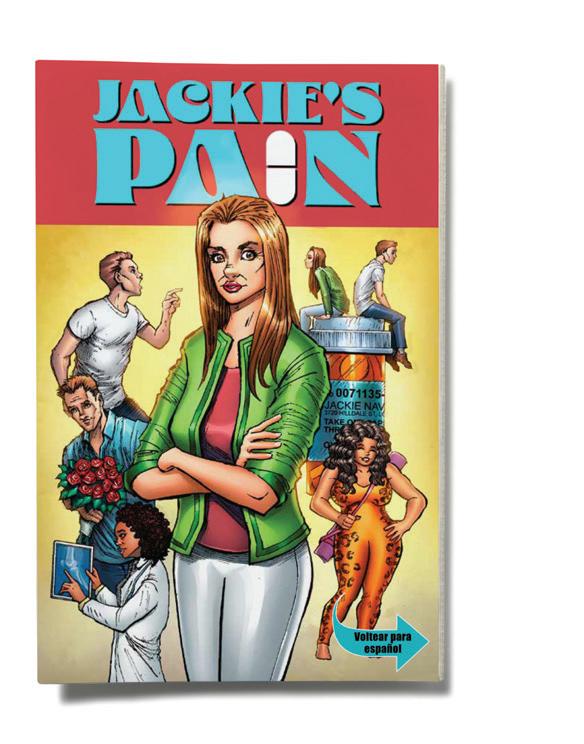
Jackie begins going to a support group for parents of addicted children as well as meditating to manage stress. She learns how to use naloxone in case her son has an overdose, and encourages him to try a support group.
Written and directed by Gabriela López de Dennis, illustrated by Los Angeles graphic design firm TinyTeam LLC and designed
by Soap Studio Inc., the graphic novel covers facts about fentanyl, sharing opioids prescribed by a doctor, and how to safely dispose of unused or expired opioids. It also addresses what naloxone is and how to use it, getting help for opioid use disorder and safer ways to get relief from pain.
The number of drug overdose deaths has quintupled since 1999, and increased by nearly 30% from 2019 to 2020, according to the Centers for Disease Control and Prevention. Nearly 75% of the 91,799 drug overdose deaths in 2020 involved an opioid.
“We hear a lot of questions from parents about what to look for as far as opioid addiction, and the booklets are extremely well made,” says Elaine Di Simone, outpatient/substance use disorder program director at Clínica Romero, a federally qualified health center where trained community leaders called promotoras are distributing the publication to local, at-risk populations. “These are very helpful for parents in our youth program.”

Numerous experts on pain management and addiction, preventive medicine and health literacy—including Baron, Jennifer B. Unger, Siddarth Puri, Aurora Geysimonyan, Edward Padilla, Melissa Durham and Gene Lang—served as script consultants.
“Especially today with so much misinformation, we want the appropriate information to reach the public,” Baron says. “Packing expert advice in an entertaining format helps ensure the public health message gets through. Our graphic novels fulfill a vital need by reaching underserved communities and educating patients about drug-related dangers. It’s part of what pharmacy is all about.”
The project was supported by the USC Mann School, UniHealth Foundation, USC Good Neighbors Campaign, L.A. Care Health Plan, Keck Medicine of USC and Beit T’Shuvah, a residential addiction recovery center whose leadership, staff and clients provided insights and contributed to the development of the publication.
8 USC MANN SCHOOL BROAD SPECTRUM
Promotoras at Clínica Romero
PREVENTING HOSPITAL COMPLICATIONS
Hospital-acquired conditions (HACs) such as adverse drug effects, infections and pressure injuries cost the U.S. nearly $48 billion annually. Avoidable complications afflict more than 3.7 million patients every year. HACs are also the third-leading cause of death nationwide.
William Padula is a nationally recognized expert leading the charge to design policies that prevent these conditions from occurring in the first place, saving both lives and money.
Although hospitals and the Centers for Medicare & Medicaid Services (CMS) have made $ 48 billion
spent annually on hospitalacquired conditions
progress in recent years toward reducing HACs, Padula says they are missing a chance for even greater impact. This is because hospital systems, in response to the threat of payment reductions from CMS, tend to create initiatives that treat issues as different and distinct. This leads to nurses and practitioners dividing the issue into too many parts rather than addressing it holistically.
As Padula, Dana Goldman and colleagues argued in an editorial for Mayo Clinic Proceedings, many HACs have overlapping risk factors. So a better way to prevent them is to focus on factors that overlap between outcomes—such as nutrition or mobility.
To reduce complexity bias—the tendency to choose the most complex of two competing
PADULA’S CHECKLIST FOR PRESSURE INJURY PREVENTION WAS WRITTEN INTO LAW AS THE STANDARD OF CARE FOR VETERANS AFFAIRS FACILITIES NATIONWIDE IN 2022.
approaches—they write that CMS should consider rewarding health systems for good performance, rather than enforcing only punitive measures. They believe that hospitals that become designated as Centers of Excellence—that is, go beyond providing a baseline standard of care—would meet eligibility criteria for these reward-based payments.
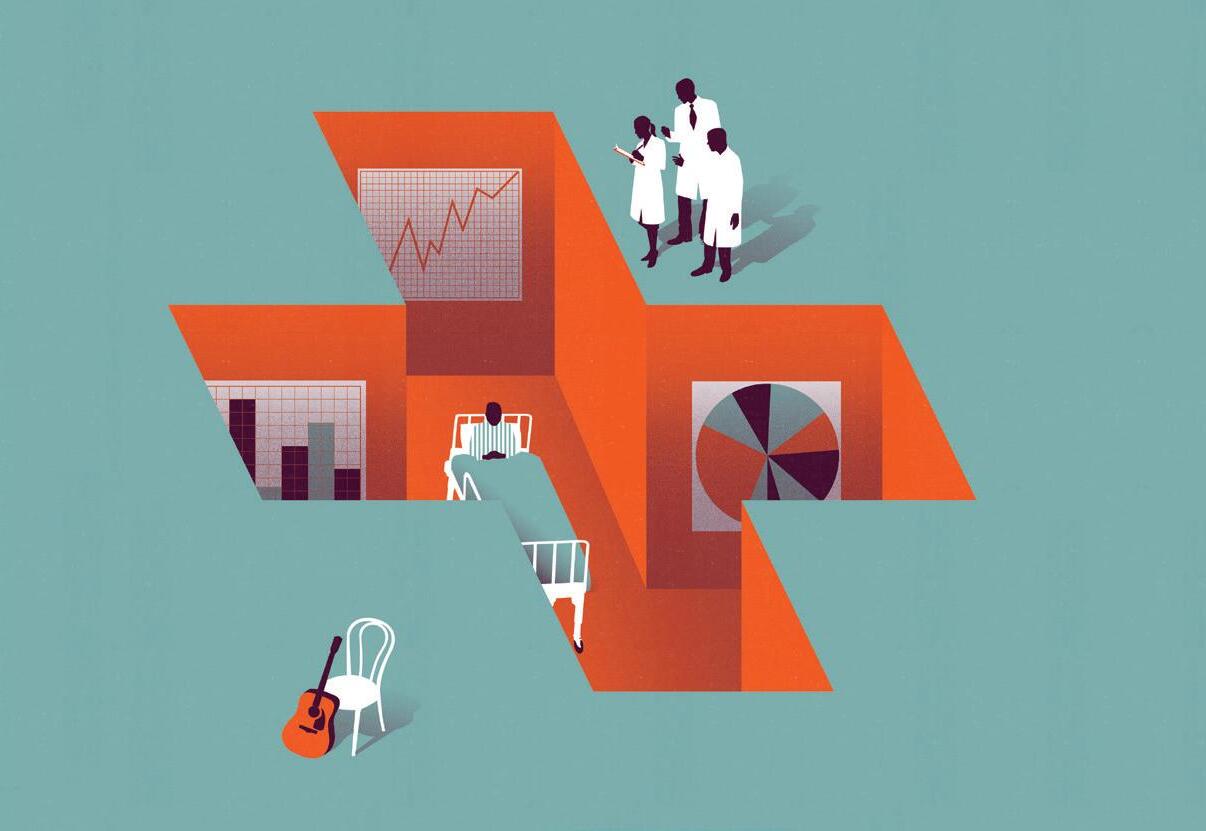
Pressure injuries, a common but preventable HAC, affect approximately 2.5 million patients in the U.S., cost the healthcare system $26.8 billion and result in 60,000 deaths annually.
Padula’s findings have gained attention from federal policymakers and health system administrators. His checklist for pressure injury prevention was written into law as the standard of care for Veterans Affairs facilities nationwide in 2022.
9 RESULTS SPRING 2023
CDC’S WRIGHT TO SPEAK AT COMMENCEMENT
USC Mann’s 2023 commencement ceremony on Saturday, May 13, will feature keynote speaker Janet S. Wright, MD, director of the U.S. Centers for Disease Control and Prevention (CDC) Division for Heart Disease and Stroke Prevention. Wright was appointed director of the division in July 2021 after returning to the CDC following a two-year detail in the Office of the Surgeon General as acting director of science and policy.
From 2011 to 2019, Wright served as executive director of Million Hearts, a national initiative co-led by the CDC and the Centers for Medicare & Medicaid Services to prevent 1 million heart attacks and strokes in the U.S. In the first five-year phase, an estimated 500,000 cardiovascular events were prevented through efforts in all 50 states and the District of Columbia involving more than 125 public and private partners.
Prior to federal service, Wright served as senior vice president for science

and quality at the American College of Cardiology from 2008 to 2011 and practiced cardiology for many years in Chico, Calif. She received the Surgeon General’s Award for Exemplary Service in 2020.
CONNECT WITH USC MANN
In keeping with the name change, the school’s website and social media accounts have changed. Reset your bookmarks!
mann.usc.edu
@usc_mann
@USCMann
linkedin.com/school/uscmann
facebook.com/uscmannschool
youtube.com/@USCMann
Lee Joins Board of Councilors
Ann Young Lee has joined the Mann School’s Board of Councilors. She has 20 years of experience managing large-scale humanitarian response and sustainable development programming across a variety of sectors.

Alongside Sean Penn in 2019, Lee co-founded Community Organized Relief Effort (CORE), an evolution of Penn’s J/P Haitian Relief Organization, for which Lee has served as CEO since 2016. During her time with CORE, she has overseen the organization’s successful transition into an international response and resiliencebuilding nongovernmental organization, responding to crises in Puerto Rico, across the Caribbean, Latin America and the continental United States. CORE was a key partner in the USC Mann School’s COVID-19 vaccination efforts.
Prior to joining CORE, Lee worked as the lead on urban humanitarian response for the UN’s Organization for Coordination and Humanitarian Affairs and a privatesector liaison for the Secretary General’s World Humanitarian Summit. She holds a master’s in urban planning from NYU and a master’s in economics and conflict management from Johns Hopkins University School of Advanced International Studies. Lee received the Society for International Development’s prestigious Truman Award in May 2009.
10 USC MANN SCHOOL BROAD SPECTRUM
SHEDDING LIGHT ON PHARMACY BENEFIT MANAGER PRACTICES
Erin Trish, in an opinion she co-authored for The Washington Post, published March 28, 2023
Schaeffer Center Co-Director Erin Trish told a U.S. Senate committee on February 16 that opaque pricing by pharmacy benefit managers (PBMs) creates mystery in the drug distribution system, “and where there is mystery, there is margin.”
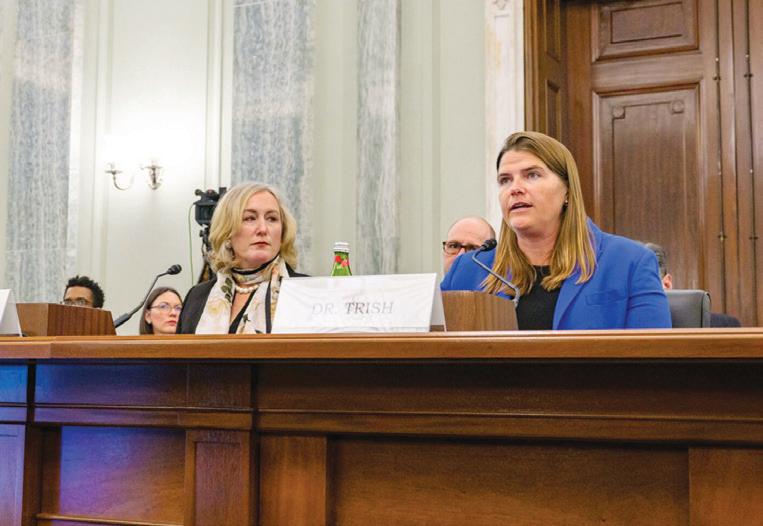
Trish was part of a panel of witnesses called to testify before the Committee on Commerce, Science and Transportation, which was preparing for a vote on the Pharmacy Benefit Manager Transparency Act recently reintroduced by Sen. Maria Cantwell (D-Wash.) and Sen. Chuck Grassley (R-Iowa). The legislation seeks to shine a light on PBMs and empower the Federal Trade Commission and state attorneys general to stop unfair and deceptive PBM business practices.
PBMs negotiate for lower drug prices on behalf of company health plans, insurers, unions and government entities. But their negotiations are secret—and evidence points to PBMs keeping more of those negotiated discounts for themselves rather than passing them on to patients.
“Prescription drug markets are complicated, and it takes a lot of boxes and arrows to show you even a simplified version of how the dollars and goods flow,” said Trish, an associate professor at
the USC Mann School. “While this complexity keeps health economists like me in business, it still remains a mystery to most Americans.”
Transparency and Competition
Lack of transparency and competition in the PBM market dominated the questions posed by senators. Committee Chair Cantwell opened the hearing by focusing on the lack of clear information about where the money goes in the pharmaceutical distribution system. Many of the committee members’ questions pointed to Schaeffer Center work on insulin distribution markets.
“What we have seen is that over time PBMs have, in fact, been effective at lowering the net prices that those insulin manufacturers are receiving,” Trish said. “But what patients care about is how much we are actually spending on these products, and the research showed that has roughly been flat over time.” Instead, the share of expenditures going to intermediaries has increased.
Unlike the world of physicians and hospitals where there are clear negotiations and prices established with insurance companies, the world of PBMs is much more opaque, Trish said.
Impact on Independent and Rural Pharmacies
Independent and rural pharmacies play a vital role in the healthcare system in countless communities. Many senators pointed to the increasing closures of pharmacies and asked about the role vertical consolidation and fees from PBMs play in these closures.
“Our ability to care for our patients is under a very clear threat from harmful PBM practices that are costing our patients and limiting their access to pharmacy services,” said Ryan Oftebro, a pharmacist who owns five community pharmacies in the Seattle area.
“Local pharmacies are absolutely essential to the delivery of quality healthcare,” said Sen. Peter Welch (D-Vt.), who focused his question on what effects PBM clawbacks of direct and indirect reimbursement fees are having on pharmacies.
“PBMs do need tools to effectively negotiate,” Trish said. “But when that happens in a highly opaque and complex market, when PBMs are the ones holding all the information and initiating many of these fees after the fact in ways that do not reflect value, that is a concern and that is a problem.”
11 RESULTS SPRING 2023
Photo courtesy of the Senate Commerce Committee
Insurance coverage has enabled middlemen to feast on billions of [generic] prescriptions each year, keeping prices higher than they need to be.”
PASSING PASSING

PASSING THE BATON PASSING THE BATON
NAMING ENDOWMENT
PROPELS SCHOOL’S TRAJECTORY ON THE FAST TRACK OF INNOVATION AND GROWTH, BUILDS UPON LONGSTANDING STRUCTURE OF COMMITMENT TO IMPROVING HUMAN HEALTH.

A physicist by training—and a biotechnology innovator and entrepreneur by inclination—the late Alfred E. Mann founded 17 companies.
These endeavors not only redefined biotechnology and our understanding of the human body, but also reached to the stars through his early work advancing the aerospace industry. Mann then turned his attention back to earth, becoming relentlessly committed to developing the rechargeable pacemaker and other medical devices that would dramatically enhance people’s lives—and that went far beyond what others before him had attempted.
In announcing an endowment to establish the USC Mann School of Pharmacy and Pharmaceutical Sciences, USC President Carol L. Folt noted the appropriateness of connecting the school with the renowned inventor. “Our pharmacy school … has innovation built into its own DNA,” she said.
The school that now bears Mann’s name—and that has long shared his commitment to improving human health—has received a $50 million endowment from Alfred E. Mann Charities and the Alfred E. Mann Foundation for Biomedical Engineering
13 RESULTS SPRING 2023
Alfred E. Mann: A Life of Innovation, Entrepreneurship and Philanthropy
1925
Born to immigrant parents in Portland, Oregon
1942
Graduates from high school at age 16 as co-valedictorian
1949
After military service during World War II, enrolls at UCLA, where he earned bachelor’s and master’s degrees in physics
1956
Starts Spectrolab, a manufacturer of space solar cells and panels (now a subsidiary of Boeing Satellite Systems)
1960
Launches Heliotek, a semiconductor company making solar cells to power spacecraft
that will support student scholarships, transformative faculty recruitments and interdisciplinary research initiatives. The new name was announced in November 2022 and celebrated in February at a gathering of more than 300 students, faculty, alumni and friends of the school (see story, page 18). It is the largest naming endowment for a school of pharmacy in California.
“The lasting support provided by the Mann endowment will give us the flexibility and wherewithal to pursue bold ideas quickly, address new opportunities and challenges as they arise, recruit and retain top interdisciplinary faculty, and increase the aid we are able to offer to attract the best and brightest students from across the country and around the world,” says Vassilios Papadopoulos, dean of the newly named USC Mann School.
Recognizing the university’s commitment to a healthier and more just world, Mann became a longtime friend and partner of USC, beginning with a landmark gift in 1998 to establish the Alfred E. Mann Institute for Biomedical Engineering (AMI). Folt was instrumental in restructuring the Alfred E. Mann Charities’ original gift to ensure the USC Mann School’s rise as a leading research and educational institution.
Mann, who died in 2016, was a member of the university’s Board of Trustees and also served on the Board of Overseers of Keck School of Medicine of USC.
The gift “will enhance USC’s academic research community and our ability to educate the next generation of providers and researchers, drive scientific innovation and create commercial, successful medical products that improve public health,” Folt says.

The endowment will allow the Mann School to extend its commitment to health equity, wellness and best possible patient outcomes, adds Steven D. Shapiro, senior vice president for health affairs at USC. “We look forward to new opportunities for innovative discoveries as we train the next generation of healthcare leaders, expand interdisciplinary collaborations within the university and improve the health of our local Los Angeles community.”
Announced simultaneously was the naming of the Mann Department of Biomedical Engineering at the USC Viterbi School of Engineering. Frances Richmond, who founded the Mann School’s regulatory science program, and her spouse, Gerald Loeb, a continued on page 17
14 USC MANN SCHOOL
Our pharmacy school … has innovation built into its own DNA.”
USC PRESIDENT CAROL L. FOLT
VISIONARY ENTREPRENEUR
Alfred E. Mann’s legacy includes rechargeable pacemakers, insulin pumps, cochlear implants, artificial retinas, mind-controlled prosthetic limbs, inhalable insulin, and microstimulators that alleviate pain and restore lost limb function.
Following are just a few of the businesses he built:
›› Spectrolab, the first of his aerospace companies
›› Heliotek, a semiconductor company that produced solar cells for spacecraft
›› Pacesetter Systems, which introduced the first implantable pacemaker that could be recharged without surgical removal
›› Bioness, devoted to helping people with neural defects—and even paralysis— regain mobility

›› MiniMed, the leader in lightweight, wearable insulin pumps that enable those with diabetes to more precisely control their blood sugar levels
›› The aptly named MannKind, which took the technology of glucose control even further with insulin that could be inhaled instead of injected
›› Second Sight Medical Products—now called Vivani Medical—which markets the artificial retina Argus II to help restore vision in people blinded by advanced retinitis pigmentosa
1972
Founds Pacesetter Systems, marketer of the first implantable pacemaker able to be recharged without removal and the first implantable insulin pump
1981
Earns the NASA Group Achievement Award, followed by the space agency’s Exceptional Public Service Award in 1984
1985
Establishes the philanthropic Alfred Mann Foundation
1991
Launches MannKind Corporation, developer of inhalable, fastacting insulin
1993 Forms MiniMed, maker of wearable insulin and programmable insulin pumps
15 RESULTS SPRING 2023
1998
Endows the Alfred E. Mann Institute of Bioengineering at USC
Co-founds Second Sight Medical Products (now Vivani Medical), marketer of the artificial retina Argus II, which helps restore vision in people blinded by retinitis pigmentosa

Joins USC Board of Trustees 2002 Begins service as research professor of biomedical engineering at USC
THE MANN LEGACY: A PERSONAL VIEW
For trailblazing USC faculty members—and spouses—Frances Richmond and Gerald Loeb, the naming gifts honoring Alfred E. Mann felt like coming home. “It seemed almost like family,” Richmond says. “We felt like we were returning to our roots.” Richmond, who originally joined USC as director of regulatory and clinical sciences at the Alfred E. Mann Institute, now directs the D. K. Kim International Center for Regulatory Science at the Mann School, where she also founded the Department of Regulatory and Quality Sciences. Loeb is a professor of biomedical engineering and neurology in the newly renamed Alfred E. Mann Department of Biomedical Engineering at the USC Viterbi School.
Their relationship with the late entrepreneurial inventor and philanthropist dates back to 1994, when Loeb became chief scientist of Advanced Bionic Corporation, founded by Mann the prior year. During his time at Advanced Bionic, Loeb helped perfect a revolutionary device that he began developing nearly two decades earlier: the cochlear implant, which can restore hearing to deaf people.
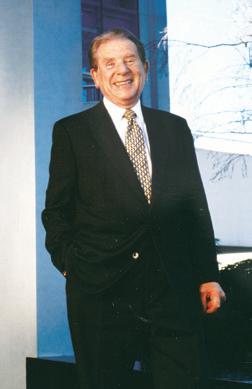
“My first contact with Al was when he decided to take on the cochlear implant project that I had worked on in the late ’70s,” Loeb recalls. “At the time, nobody knew if cochlear implants were a viable product.” But Mann “mostly as a measure of philanthropy,” Loeb notes, devoted nearly $20 million to making them work.
“That was an indication of Al’s determination,” Loeb adds. “If he decided to do something, he didn’t quit until it was done.”
2003 Named Business Person of the Year by Los Angeles Business Journal
2004 Begins Bioness, a corporate leader in helping people with neural defects—and even paralysis— regain mobility
Gerald Loeb and Frances Richmond at an Advanced Bionic holiday party in the mid-1990s
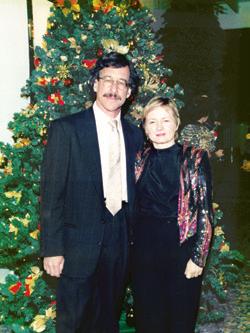
At the time, Richmond served as a clinical scientist at Advanced Bionic, where she also aided in such areas as marketing. Then, when the Mann Institute was endowed at USC in 1998, she and Loeb became the first two recruitments to the initiative.
“One of his great strengths,” Richmond says of Mann, “was that he really had a core interest not just in saving the lives of people who were patients, but of people themselves. So when he developed a company, he didn’t just care about the people at the top, he also made it a point to get to know everyone there.”
16 USC MANN SCHOOL
The late Alfred E. Mann
Starts Implantable Acoustics to manufacture implantable hearing devices
professor in the Mann Department of Biomedical Engineering, were the first faculty recruited to AMI in 1998 (see sidebar, page 16). A third and final distribution will expand USC’s research partnership with Children’s Hospital Los Angeles.
“This sweeping initiative reflects Alfred Mann’s pioneering vision and has the power to expand human understanding in pharmaceutical sciences and biomedical engineering,” Folt says.
The naming announcement also included the addition of Pharmaceutical Sciences to the Mann School’s name—an important distinction reflecting how the 118-year-old school and the field have advanced. In the school’s early days, the majority of students trained to be community pharmacists. But today—and for many years now—the school has trained pharmacists, pharmaceutical scientists, medicinal chemists, pharmacologists, drug developers, clinical trialists, economists specializing in drug policy and costs, and regulatory scientists for all potential jobs, not for a specific one, Papadopoulos notes. In addition, the school’s burgeoning undergraduate program continues to attract growing numbers of students each semester, offering courses on topics such as pharmacoethics, precision medicine and cancer pharmacotherapy.
The naming endowment starts a new chapter for the school, funding student scholarships and faculty recruitment while continuing to expand a research infrastructure across USC’s University Park and Health Sciences campuses. The endowment will fuel a strategic plan that focuses in part on curricular changes that will “ensure the school’s longstanding place at the vanguard of progress in pharmacy and pharmaceutical sciences,” Papadopoulos says.
“We will continue to transform how students are educated, in all of our degree programs, so they remain prepared to continue pushing forward the frontiers of pharmacy and healthcare to benefit individuals and communities everywhere,” Papadopoulos adds. “As healthcare needs change, we will have the agility, coupled with the know-how and determination, to pursue innovations that anticipate and are ahead of the curve in meeting those changes.”
Over the coming year, the school will open a new community pharmacy and health center in South Los Angeles, reaffirming its commitment to alleviating health disparities created by pharmacy deserts—or shortage areas. This pharmacy will offer chronic disease management as well as health and wellness education.
2004
Co-founds
Neurosystec, which develops treatments for brain and nervous system conditions that combine ultraminiature technology with therapeutic agents
2011
Earns Lifetime Achievement Award from the Medical Design Excellence Awards program
2013
Second Sight wins approval for first artificial retina

2014
Food and Drug Administration approves MannKind’s application for inhalable insulin
2016
Dies at age 90, having founded 17 companies that had a cumulative value of $8 billion
17 RESULTS SPRING 2023
We will continue to transform how students are educated … so they remain prepared to continue pushing forward the frontiers of pharmacy and healthcare.”
DEAN VASSILIOS PAPADOPOULOS
USC Mann School Marks a New Era


1 2 3

18 USC MANN SCHOOL GIVING
1. USC President Carol Folt, Dean Vassilios Papadopoulos and USC Board of Trustees Chair Suzanne Nora Johnson at the school naming ceremony
2. Danielle Colayco, PharmD ’08, MS ’10, Debrina Johnson, PharmD, BCGP ’13, and Board of Councilors member Shushma Patel
3. Martine Culty with student speaker Renita Moradian
Before a crowd of more than 300 wellwishers on Feb. 8, USC President Carol L. Folt, Board of Trustees Chair Suzanne Nora Johnson and Dean Vassilios Papadopoulos celebrated the naming of the USC Alfred E. Mann School of Pharmacy and Pharmaceutical Sciences—a game-changing moment in the school’s 118-year history.
The event formally celebrated the generous $50 million endowment from the Alfred E. Mann Charities and the Alfred E. Mann Foundation for Biomedical Engineering to name and further strengthen the school.

Folt was instrumental in restructuring the Alfred E. Mann Charities’ original gift to ensure the USC Mann School’s rise as a leading research and educational institution.
The naming endowment also underscores the prominence of the school—one of the top-ranked pharmacy schools in the nation—in education, research and community care in Los Angeles.
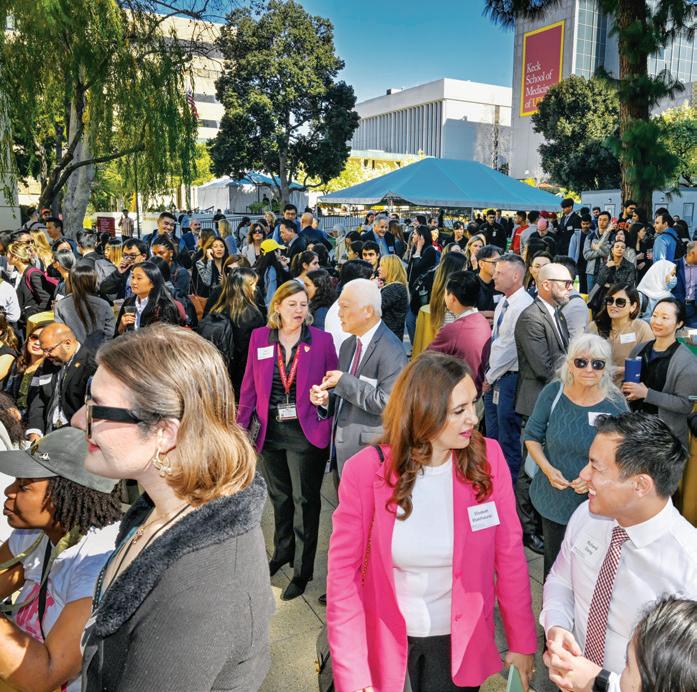
“In the coming century, biomedical engineering will drive some of the most consequential breakthroughs,” Folt said. “The school is now partnering with USC Dornsife to turn plastic waste from the Great Pacific Garbage Patch into medicines and other much-needed products.”
Johnson, who knew Mann, said his spirit of ingenuity was legendary. The legacy his foundation now leaves to USC Mann and his namesake Department of Biomedical Engineering in the USC Viterbi School of Engineering is especially fitting.

“Al cared less about stockpiling wealth and more about serving humanity,” Johnson said. “It’s not hyperbole to say: The companies he founded helped the blind to see, the deaf to hear and the physically challenged to walk.”
“Very few pharmacy schools have received naming gifts, and still fewer have been bestowed with a significant endowment,” Papadopoulos said. “What this means for our community—and how it will redirect what we can achieve—is beyond measure.”
The Alfred E. Mann Charities’ gift will fuel a strategic plan for the school that focuses in part on curricular changes that will “ensure the school’s longstanding place at the vanguard of progress in pharmacy and pharmacological sciences,” Papadopoulos added.
19 RESULTS SPRING 2023
4. (top row) David Makhani, PharmD ’87, Papadopoulos, Folt; (bottom row) Larry Jung, PharmD ’77, Wandy Jung, PharmD ’77, Josephine Heeres and Board of Councilors Chair Emeritus Bill Heeres
5. Folt, Papadopoulos, Robert Popovian, PharmD ’93, MS ’96, Esperanza Neu and Board of Councilors Chair David Neu
4 5 6
6. Guests arriving at naming ceremony
ages, genders, ethnicities and physical abilities to help everyone feel seen. I had a set printed for my daughter’s classroom. They served as my beta testers.
That suggests you made changes. What was the revision process like?
My friend and fellow USC alumna, Dr. Lan Tran, also read the book to her kid’s classroom during their career day. For the second edition, I asked Dr. Steve Chen, who is also a board member of the Komoto Family Foundation, to connect me with a professional illustrator to help polish up the book for wider distribution. He introduced me to Matt Manos at verynice, who understood my vision and helped us take the book to the next level. I hired translators to develop Spanish and Tagalog versions as well.
How have children reacted to the book?

So far, it’s been a hit! My daughter’s classmates stopped me after every page to share their own stories of visiting the pharmacy to get their medicine and their flu and COVID shots. One raised his hand to ask how we help patients who are deaf or hard of hearing, so we took the opportunity to talk about the importance of accessibility, including sign language and other types of language interpretation. I asked them what languages they spoke at home, and the kids were eager to share that they spoke Arabic, Tagalog, Spanish, Mandarin, Cantonese, Japanese, Korean, Punjabi and more!
What do kids most seem to enjoy about it?
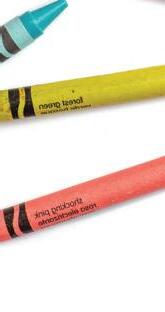
The crowd favorite seems to be the part about compounding medicines for pets—everyone wanted to talk about their own pets at home! Fun fact: Matt modeled the illustration after my own dogs, Lucy and Abby.
What messages would you like children (or anyone else) to take away from the book?
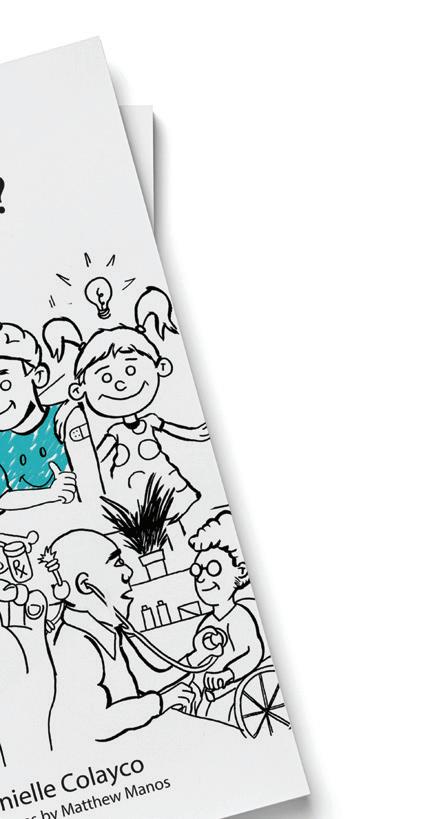
I included some pages on poison prevention, in loving memory of the late Dr. Kathy Johnson, who spearheaded the poison prevention program at local elementary schools in the early 2000s. When we got to this part, we talked about not taking medicines that are not meant for them—including the gummies, lollipops and other medicines they might find lying around the house. I’m mindful of recent overdoses on CBD and opioids that come in many formulations resembling candy. Many of the public service announcements on drug overdoses are geared toward teens and adults, so this book may be an age-appropriate tool to facilitate conversations with younger kids.
The key takeaway, though, is that pharmacists are doctors who are experts in medications and vaccines—and you can ask us questions about your health anytime.
COMBINING CONVENIENCE WITH SAFETY
Jack Simityan, PharmD ’11, is chief operations officer of SortPak, a pharmacy delivery service committed to improving medication adherence. He established the company with Chief Executive Officer Raymond Shirvanyan in 2018. The idea grew out of their experience at a previous company started by Shirvanyan, TNH Advanced Specialty Pharmacy, which focused on drugs for cancer.
“At TNH we noticed a lot of patients were not following a proper medication regimen and would experience side effects,” Simityan recalls. “As pharmacists, we would step in and help develop medication plans for them. This inspired us to start SortPak and work with a broader population beyond oncology.”

SortPak delivers packages to its members that include all their medications with instructions and schedules for proper use. “We also have an online portal, AlignRx, that allows us to have an updated list of medications for each patient,” Simityan says. SortPak partners with numerous health plans so members can receive a 90- to 100-day supply of medications and cut down on their pharmacy visits.
“Members can chat with a pharmacist and get recommendations on over-thecounter medications based on symptoms they are experiencing,” Simityan says.
The entrepreneurs ultimately plan to augment their delivery service with brick-and-mortar locations in every state so members can enjoy the option of an accessible pharmacy.
Simityan credits the USC Mann School for helping instill big ambitions and the skills to achieve them. “When I was an undergraduate, I worked closely with Clay Wang, chair and professor of pharmacology and pharmaceutical sciences,” Simityan recalls. “He inspired me because he did research on therapeutics that could help astronauts deal with the side effects of space travel. That’s something that not a lot of people think about and execute! Working with him showed me that there is more to pharmacy than just dispensing medication.”
In addition, he says, “USC also sets up its students for success, and being a part of the Trojan Family has opened so many doors for me.”
21 RESULTS SPRING 2023
We want to hear from you! Submit your updates and career news to mann.usc.edu/class-notes to be included in the next edition of Class Notes.
1970 s
Jerry Boden , PharmD ’75 , retired from St. Francis Medical Center in Lynwood, Calif., in 2021. Last fall, he began mentoring PharmD students as part of the USC Mann studentalumni mentoring program.
Rita Shane , PharmD ’78 , chief pharmacy officer at Cedars-Sinai, received an honorable mention in the 2022 Innovative Pharmacy Practice Awards from the California Society of Health-System Pharmacists (CSHP). She was recognized for the Grandparents Project, a pilot program that teaches high school students how to ensure that their parents and grandparents are taking medications correctly.
Paula Stewart Kreder, PharmD ’79 , co-owned Nudo’s Pharmacy in El Cajon, Calif., for 34 years. She sold it in 2021 and is now happily retired.
1980 s
Gary M. Besinque , PharmD ’82 , was elected president of the CSHP Board of Directors.
Charles W. Stark , BA ’79, PharmD ’82 , received the Research Achievement Award at the 2023 USC Mann Alumni Awards Gala. He is senior vice president of research and development at Emmaus
Medical Inc., an assistant professor at the USC Mann School and, since 1991, an advanced pharmacy practice experience preceptor.
Arthur Dominguez , PharmD ’84 , retired from Kaiser Permanente, where he was a clinical pharmacy director.
1990 s
Hector Delgado, PharmD ’93 , was elected to the CSHP Board of Directors.
Robert Popovian , PharmD ’93 , MS Pharmaceutical Economics and Policy ’97, co-authored a January 2023 article in The Hill, “Getting Vaccinated at Pharmacies Works: It Could Soon Disappear.”
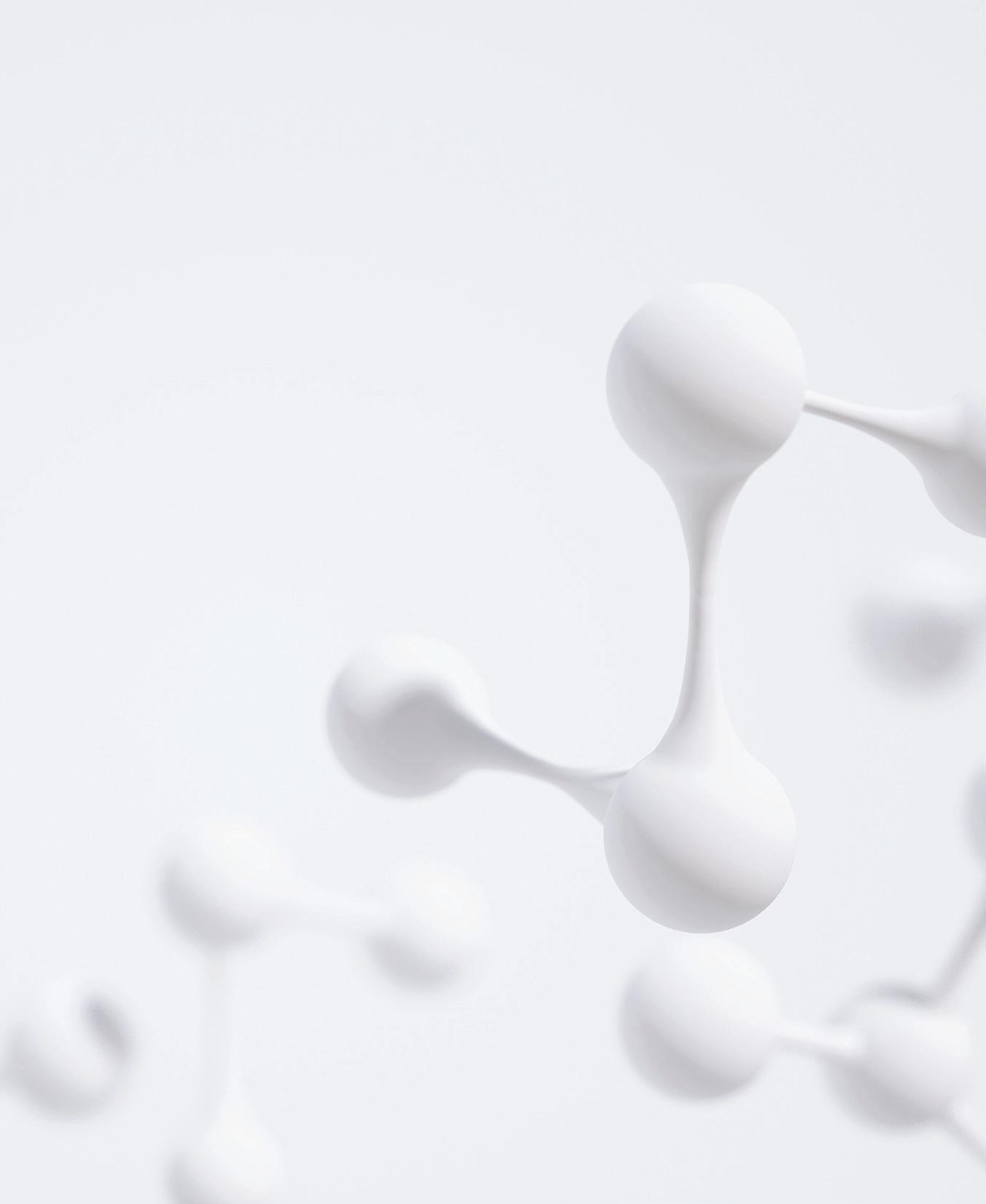
2000 s
Sharon Jhawar, PharmD ’01 , is chief pharmacy officer at SCAN Health Plan, one of the nation’s largest notfor-profit Medicare Advantage plans.
Ken Thai , PharmD ’02 , CEO and co-founder of 986 Pharmacy, received the 2022 National Community Pharmacists Association Willard B. Simmons Independent Pharmacist of the Year award.
Jay Yamamoto, PharmD ’03 , recently became senior director, commercial strategy and account management, at Apotheco Pharmacy Group.
Komal Patel , PharmD ’04 , has a new role as senior product manager, clinical, at Interwell Health.
Lindsey Valenzuela , PharmD ’06 , was elected a member of the CSHP Board of Directors.
ALUMNI
22 USC MANN SCHOOL
class notes
David Truong , PharmD ’07, MS Regulatory Science ’07, received the Distinguished Alumni Award at the USC Mann Alumni Awards Gala 2023. He is director of global regulatory affairs at Jazz Pharmaceuticals in San Diego. Truong has precepted and mentored students and serves as an adjunct faculty member at the USC Mann School. He also is a trustee of the California Pharmacists Association and a board member of USC’s QSAD Centurion.
Danielle Colayco, PharmD ’08 , MS Pharmaceutical Economics and Policy ’10, was featured in the September 15, 2022, episode of the Pharmacy Times: Public Health Matters podcast, discussing migrant health.
Jackie Jaskowiak , PharmD ’08 , was named Inpatient Pharmacist of the Year at UC San Diego Health. She recently presented continuing pharmacy education programming on sterile compounding and the operating room at the 2022 CSHP Seminar in Anaheim, Calif.
Christopher Waldapfel , PharmD ’09 , is owner of Red Thread Communications LLC. 2010 s
Duane Mauzey, Doctor of Regulatory Science ’12 , received the Innovation in Regulatory Science Award at the USC Mann Alumni Awards Gala 2023. He is director of regulatory affairs for CMC at Glaukos Inc., where he oversees quality of clinical and marketing applications for novel pharmaceuticals that treat chronic eye diseases. He also is an adjunct assistant professor at the USC Mann School.
Lilia Xu , PharmD ’12 , received the Young Alumni Award at the 2023 USC Mann Alumni Awards Gala. She is vice president of business development for 986 Degrees Corporation, which operates several pharmacies in the San Gabriel Valley and has provided more than 40,000 COVID-19 vaccinations to the community. Xu is a member of the boards of the San Gabriel Valley Pharmacists Association and QSAD Centurion at the USC Mann School.
Richard Dang, PharmD ’13 , received the Dean’s Medallion Award at the 2023 USC Mann Alumni Awards Gala 2023. During the COVID-19 pandemic, Dang was a leading voice for testing and vaccination, notably heading the Los Angeles COVID-19 program that resulted in well over 1 million vaccines administered across the city.
Jessica Lin , PharmD ’13 , a clinical pharmacist at LAC+USC Medical Center, has joined the USC Mann Alumni Engagement Board.
Vincent Capati , PharmD, MS Regulatory Science ’14 , an associate at Nixon Peabody LLP, has joined the USC Mann Alumni Engagement Board.
Beatrice Chiang, PharmD ’18 , is director of Clinical Safety Science at ALX Oncology.
Christian Khoury, PharmD ’18 , started a new position as district leader, Rx, at CVS Health.
Victor J. Gangi , DRSc ’21 , is vice president, regulatory affairs, at Zenas BioPharma in Waltham, Mass.
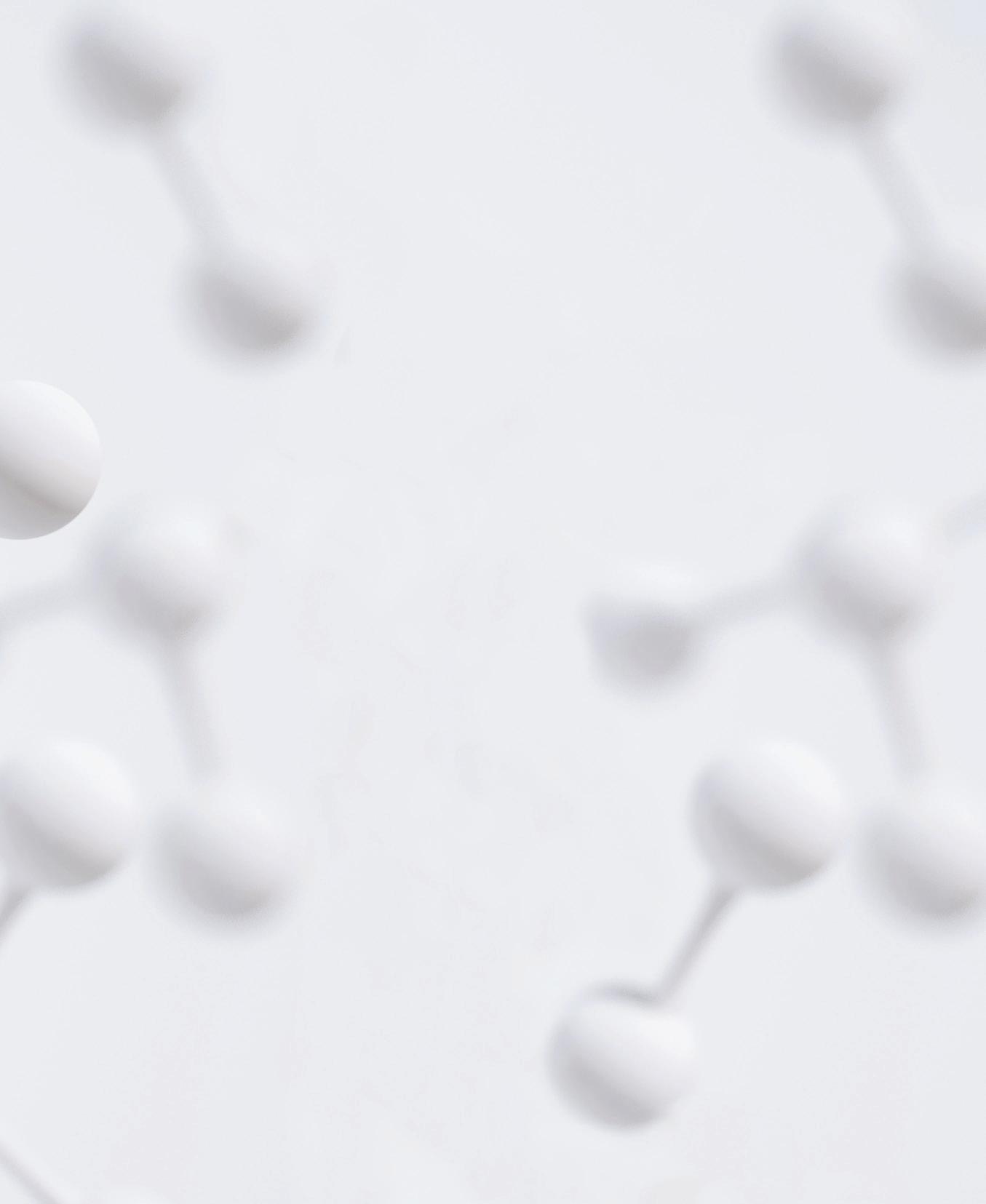
Angela Arutyunyan , MS Biopharmaceutical Marketing ’22 , is a project manager at Kaiser Permanente in the department of National Consumer Sales in Los Angeles.
Evan Makhani , BS Pharmacology and Drug Development ’22 , is a first-year student in the PharmD program at USC Mann.
Amy Tran-Guzman , MS Regulatory Science ’17, PhD Molecular Pharmacology and Toxicology ’22 , is a scientist at Bristol Myers Squibb working on in vitro model development to support toxicology programs. She also is a member of the USC Mann Alumni Engagement Board.
IN MEMORIAM
Dennis Hayes , PharmD ’63 , died September 12, 2022. For more than 25 years, he owned a pharmacy in Glendale, Calif. He later worked as a compounding pharmacist after moving from Thousand Oaks to Palm Desert, Calif. He also served as an adjunct professor at the USC Mann School and stayed connected with the USC community throughout his life.
Ralph Bennett Jr., PharmD ’70, died March 5, 2022.
Leslie (Wenzhe) Feng, MS Healthcare Decision Analysis ’21 , is a business system data analyst at Abbvie.
Robert Stein , PharmD ’78 , JD, died December 28, 2022. He was a founding faculty member of the Keck Graduate Institute’s School of Pharmacy and Health Sciences and pioneered a unique program in law and ethics education.
2020
s
23 RESULTS SPRING 2023
Mangul Awarded $3 9M NIH Grant
Serghei Mangul combines expertise in computational biology and bioscience to help close the digital divide that can prevent life scientists from maximizing the potential of data-driven investigation. He recently was awarded a five-year, $3.9 million National Institutes of Health (NIH) grant to fuel this work further.
“This funding will support my lab’s efforts to create open-source software tools and easy-to-use databases to study adaptive immune repertoires across diverse populations,” says Mangul, an assistant professor of clinical pharmacy at the Mann School.
He notes that limiting immunogenomics studies to people of European ancestry restricts the ability to identify variations in human adaptive immune responses. Thus, expanding the diversity of those
studied is vital to advancing the frontiers of human immunology.
“Current databases are ill-equipped to serve non-European populations and thus we should move the research to diverse populations,” he adds. “Without doing that, we cannot serve underrepresented racial and ethnic groups.”
NIH Mentoring Fellowship
Mangul, who joined the USC Mann faculty in 2019, focuses on improving the techniques of bioinformatics—computational analysis of biological data—to better understand the mechanisms of disease.
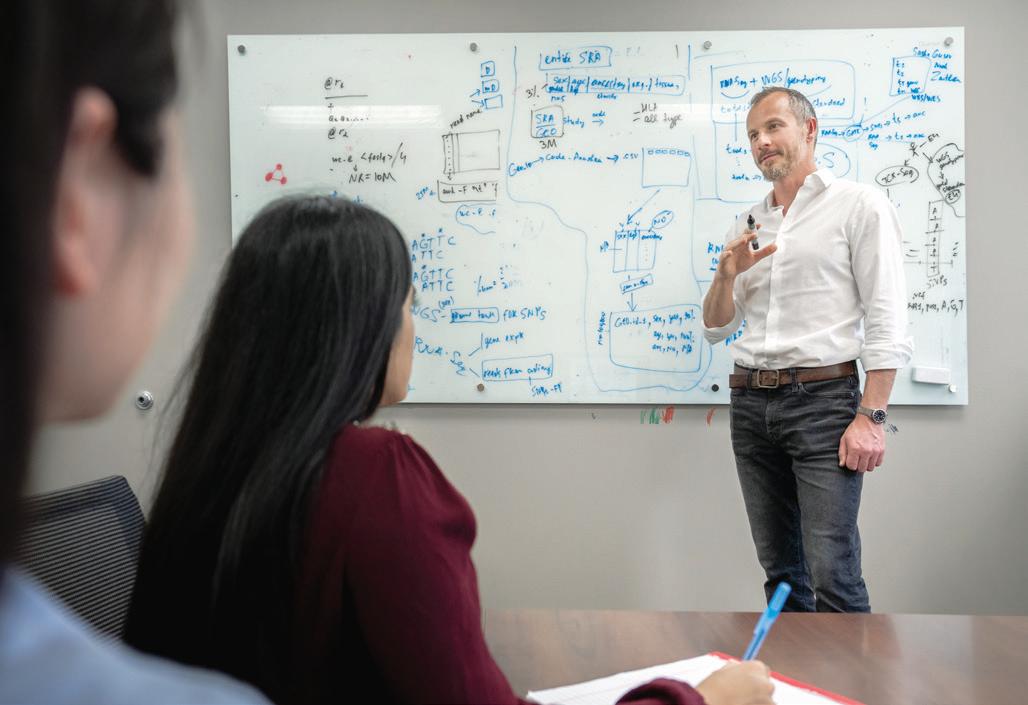
In October 2022, he was selected to participate in the inaugural NIH cohort of the Artificial Intelligence/Machine Learning Consortium to Advance Health Equity and
Researcher Diversity Fellowship Program in Leadership.
As part of the nine-month program, Mangul is mentoring Chitra Nayak, associate professor at Tuskegee University, in developing a machine-learning algorithm to determine the role of ancestryassociated mutations in reprogramming the transcriptional profile linked to aggressive cancer and high mortality among African Americans.
Mangul hopes this training in the use of artificial intelligence/machine-learning methods will result in future programs at Tuskegee University to empower students with cutting-edge methods for analyzing and interpreting large-scale, next-generation sequencing datasets across diverse populations.
24 USC MANN SCHOOL FACULTY
REFORMING THE DIALYSIS MARKET
Fifteen percent of the U.S. population has chronic kidney disease. At its most severe, end-stage kidney disease (ESKD) requires patients to receive dialysis regularly or have a kidney transplant. According to the Centers for Disease Control and Prevention, some 750,000 Americans have ESKD, with more than 70% of that number needing regular dialysis treatment. Although dialysis is lifesaving in the short term, five-year mortality rates still exceed 60%.
Most patients with ESKD receive health insurance through Medicare, which provides coverage for patients with kidney failure regardless of age. However, a growing number are covered through private payers. In research published in JAMA Internal Medicine, Schaeffer Center Co-Director Erin Trish and colleagues found that monthly spending on ESKD-related outpatient dialysis services was three times higher in the individual market than through Medicare. This raises concerns that dialysis centers are steering patients into the individual market—and costing the healthcare system more in the process.
“Our study shows that, even though the number of dialysis patients in the individual market is relatively small, because their spending is so high, this enrollment can actually raise premiums across the entire individual market,” Trish says.
Congresswoman Katie Porter (D-Calif.) cited the team’s research in a report calling for robust oversight of the dialysis industry.
Since two large companies dominate that industry, Trish notes that any effective oversight must grapple with the dialysis market’s heavy consolidation. This need became even greater when the 21st Century Cures Act allowed patients with kidney failure to
enroll in Medicare Advantage, the private-sector alternative to traditional Medicare. Medicare Advantage plans pay 27% more than Medicare for the median price of outpatient dialysis treatment, Trish’s research shows. Without significant reforms to increase competition, such high markups will ultimately increase premiums and reduce benefits.
New Faces
DEAN APPOINTED HONORARY INVESTIGATOR

Mann School Dean Vassilios Papadopoulos has been named an honorary investigator by the Research Institute of the McGill University Health Centre (RI-MUHC). The appointment recognizes his distinguished contributions in multiple roles at RI-MUHC, where he served as executive director, chief scientific officer and faculty member before joining USC in 2016. While at McGill, Papadopoulos was also a senior scientist in its Metabolic Disorders and Complications Program, holder of the Phil Gold Chair in Medicine, and a mentor to numerous researchers and trainees.
The honorary investigator appointment was created in 2019 to recognize researchers for exceptional contributions to RI-MUHC, their field or both. “Vassilios Papadopoulos’ achievements serve as an example and inspiration for the current RI-MUHC research community,” the institute’s leaders noted in a statement.
Allison Chacon, PharmD ’20, has joined the USC Mann School as assistant professor of clinical pharmacy (clinician-educator) in the Titus Family Department of Clinical Pharmacy. Her focus includes community and ambulatory care, helping support the new South Los Angeles Pharmacy, maintaining a clinical service with the Department of Rheumatology at Keck Medicine of USC and teaching the Mann School’s nonprescription therapies course. Chacon had been practicing as a clinical pharmacist at the USC Medical Plaza Pharmacy since completing two years of postgraduate clinical residency training at USC Mann.

Brian Ma, PharmD, has been appointed an assistant professor of clinical pharmacy (clinician-educator) in the Titus Family Department of Clinical Pharmacy and co-director of Introductory Pharmacy Practice Experience Programs at the Mann School. He is a board-certified pharmacotherapy specialist as well as interim director of interprofessional education for the school. His current practice site is in the inpatient internal medicine setting at the Los Angeles County+USC Medical Center, where he provides clinical pharmacy services for hospitalized patients. He earned his PharmD at the University of California, San Francisco.

25 RESULTS SPRING 2023
Saving Money but Increasing Risk
Although warfarin is the standard treatment for lowering the risk of stroke from atrial fibrillation, non–vitamin K antagonist oral anticoagulants (NOACs) have emerged as a more effective alternative with fewer side effects. NOACs also tend to be more expensive. Research led by Geoffrey Joyce and Seth Seabury finds that the formulary restrictions used by insurers and pharmacy benefit managers to save money result in fewer patients using NOACs or warfarin— which likely leads to poor health outcomes.
The study finds that beneficiaries in Medicare Part D plans with restricted access to NOACs have a lower probability of using the drugs, and those with reduced access show worse medication adherence. In addition, patients in the sample faced longer delays in filling their initial prescription after an atrial fibrillation diagnosis. This all adds up to a higher aggregate risk of death, stroke, transient ischemic attacks or systemic embolism for patients with restricted coverage.
The researchers note that, while formulary restrictions can be appropriate, such policies should be continuously reviewed to ensure that patients have timely access to effective medications.
Camarero Receives Lung Cancer Research Grant
The American Lung Association has awarded Julio Camarero a $200,000 Lung Cancer Discovery Research Grant for the project “Therapeutic Targeting of Hdm2/HdmX E3 Ligase in Lung Carcinoma.” His lab has discovered a novel cyclotide and is working on different strategies to improve the cellular uptake and pharmacokinetic profiles of bioactive cyclotides. Camarero is the John A. Biles Professor in Pharmaceutical Sciences.
Faculty Books
Terry David Church—Doctor of Regulatory Science ’17, MS Regulatory Science ’15, assistant director of undergraduate programs, and assistant professor in the Department of Regulatory and Quality Sciences— recently published his first textbook, Hidden History: Drugs, Geography, and Human Addiction

William Padula—a Schaeffer Center fellow and assistant professor in the Mann School’s Department of Pharmaceutical and Health Economics—is co-author of a new book, Handbook of Applied Health Economics in Vaccines, published by Oxford University Press.


26 USC MANN SCHOOL FACULTY
Limiting access to NOACs through step therapy or prior authorization may exacerbate the current underuse of anticoagulants and increase the risk of stroke among newly diagnosed atrial fibrillation patients.”
Geoffrey Joyce, chair of the Department of Pharmaceutical and Health Economics
ELUCIDATING COVID’S IMPACT
Associate Dean for Research Affairs Annie Wong-Beringer and colleagues conducted a detailed analysis of nonelderly adults hospitalized with COVID-19 between March and November 2021 to identify age-differentiated characteristics and outcomes between two waves of the pandemic: the original Alpha form and the more severe Delta variant. Unvaccinated individuals required prolonged hospital stays with more than half remaining on oxygen at the time of hospital discharge.
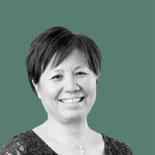
Risk for severe disease and worse outcomes increased substantially with every 10-year increment between ages 25 and 64. The study demonstrated that such risk had been underappreciated in unvaccinated nonelderly adults, especially the middle-aged cohort, despite their being younger and having fewer comorbid conditions.
QATO GARNERS $1.65M GRANT
Computer illustration of a lipid nanoparticle mRNA vaccine, a type of vaccine used against COVID-19 and influenza.

Published in the Journal of Primary Care Community Health, the study emphasized the importance of prioritizing vaccination efforts for this population, particularly in light of the impact on children and families. Some 65% of children facing orphanhood as a result of COVID-19 belong to families of racial and ethnic minorities. The study also noted the toll on household income and food security in families of adult caregivers with lingering health issues from long COVID.
Dima M. Qato has been awarded a four-year, $1,650,000 grant from the National Institute on Aging to address structural racism and advance policies within Medicare Part D to prevent pharmacy closures and advance equitable access to medicines.

Despite evidence that pharmacy closures contribute to declines in medication adherence, rigorous investigations on the extent and impact of structural racism within Medicare Part D—policies that reinforce differential access to resources and opportunities— have not been conducted, according to Qato.
“We need to shift the focus within Medicare Part D payment and delivery reform from addressing individual-level barriers toward addressing structural racism and how it operates at the community level, specifically pharmacy closures, to adversely affect minority older adults living in segregated neighborhoods,” says Qato, Hygeia Centennial Chair at the USC Mann School and a senior fellow at the USC Schaeffer Center for Health Policy & Economics. “The failure to do so may undermine ongoing efforts to reduce disparities.”
A public health advocate and community pharmacist, Qato aims to generate new evidence to guide Medicare Part D payment and delivery reforms to protect pharmacies from closure. For older adults who rely on their local pharmacies, Qato’s project aims to reduce disparities in medication access and advance health equity.
“Pharmacy closures may be an overlooked communitylevel mechanism of structural racism that exacerbates the adverse consequences of segregation on disparities in pharmacy access and medication adherence,” says Qato, director of the Program on Medicines and Public Health. She also holds a joint appointment with the USC Spatial Sciences Institute at the USC Dornsife College of Letters, Arts and Sciences.
“The goal of this project is to evaluate the extent and impact of pharmacy closures on medication adherence among chronically ill older adults with Medicare Part D and identify subgroups most at risk for nonadherence post-closure.”
27 RESULTS SPRING 2023
Dima Qato Annie Wong-Beringer
Perfect Balance
When President Biden hosted the largest Diwali celebration in White House history, student Roshni Badlani was among the performers. Badlani, a fourth-year PharmD candidate at USC Mann, is part of the Sa Dance Company, which entertains while raising awareness of Indian culture.


Badlani and six fellow company members from Los Angeles, New York and Austin, Texas, shared their artistry to the delight of attendees. “Continuing this art form— alongside a group of women passionate about keeping dance in their lives—has been an incredible outlet throughout pharmacy school,” she adds.
Badlani, who is also a student ambassador for the school’s Margaret and John Biles Leadership Center, joined the Sa troupe after earning her undergraduate degree in global health from USC in 2017.
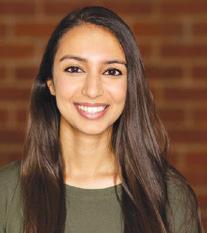
“But we’ve been training all our lives,” she says of their shared dedication to dance. She balances her commitment to performance not just with her studies but also
FOR THIS PHARMD STUDENT, HER LOVE OF DANCE HELPS HER MAINTAIN A WELLROUNDED LIFE.
with experience that includes a pharmacy internship with Keck Medicine of USC and work at Cedars-Sinai.
Badlani appreciates the Mann School’s commitment to helping students maintain well-rounded lives. Her alumni mentors and preceptors all impressed her by maintaining interests beyond the field of pharmacy— from baking to hairstyling. “I could see that maintaining outside passions gives them the energy to excel in the profession,” she says.
“It’s important to keep dance in my life,” Badlani says. “It’s about realignment and will help me be a better pharmacist. Dance gives me the energy to do my best work.”
Badlani, second from right
28 USC MANN SCHOOL STUDENTS
REVOLUTIONIZING ADDICTION TREATMENT AND TRAINING
Of the 20 million people in the United States diagnosed with a substance use disorder in 2019, only 10% received treatment. In 2021, an estimated 107,000 people died of drug overdoses, while every year nearly 95,000 people die from alcohol-related causes, making it the third-leading preventable cause of death in the U.S. The crisis surged during the COVID-19 pandemic, particularly among communities of color, U.S. Centers for Disease Control and Prevention data shows.
The USC Institute for Addiction Science aims to revolutionize the way substance use is discussed, treated and prevented through a new Master of Addiction Science—the first of its kind to be offered at a major university. The program, open for enrollment for fall 2023, is a partnership between the Mann School, the Keck School of Medicine and the Dworak-Peck School of Social Work.
Addiction is largely treated by specialists who use only the tools within their individual discipline. The new degree seeks to create an integrated system-of-care model that supports codelivery of care and prevention for greater impact and increased patient satisfaction. The program will also foster collaboration among researchers to explore emerging scientific developments.
“The epidemic of substance use disorders cannot be solved in silos,” says Daryl Davies, associate director of the institute and associate dean of undergraduate programs at USC Mann. “We need interdisciplinary and novel approaches, and innovative training programs to build a pipeline of professionals dedicated to solving this crisis.

“To date, pharmacotherapies, even in conjunction with psychosocial strategies, have had limited success in treating alcohol use disorders—with approximately 70% of patients relapsing into heavy drinking within one year,” adds Davies, who is also director of the Alcohol and Brain Research Laboratory and the Timothy M. Chan Professor of Complementary Therapies at the Mann School. “The development of new treatments for addiction represents an important unmet medical need.”
Breaking Down Barriers
Students in the new program can choose among courses spanning 18 schools at USC, with an option to pursue clinical or research tracks. The new degree is in keeping with USC’s priority to leverage cross-campus collaboration for both faculty and students, drawing on the strengths and perspectives of multiple disciplines to create solutions to challenging societal issues.
The curriculum examines a wide variety of addictions—from opioids and alcohol to vaping and gambling—with myriad approaches to prevention
and treatment. Students will develop the skills to translate research theory into clinical practice that uniquely accounts for individual patients and their histories, making it a true bench-to-bedside program.
“We are bridging the gap between science and practice,” says Terry Church, assistant professor of regulatory and quality sciences at the Mann School and one of the lead curriculum architects of the new program. “We’re bringing together people in the field and those in the lab to build a conversation that better applies scientific evidence and real-world experience. It makes for a broad view, and I think that’s truly how we’re going to solve some of these larger problems in the world.”
A Comprehensive Strategy
The causes of addiction and substance use disorders are multifaceted, often interdependent and not fully understood by current scientific research. Some people may have a strong genetic predisposition while others appear to be influenced by their environment, and still others may have developed
damaging habits and behaviors over time. Studies show that social determinants of health can actually alter DNA and other core elements of physical health and development.
To address the many forms in which addiction can present, the Master of Addiction Science program takes a cell-to-society approach that spans from cellular biology to social and physical environmental factors and from behavioral norms to government policies. It also allows for a more comprehensive look at addiction from many angles.
In addition, this leading-edge, transdisciplinary approach to addiction science increases the potential career paths for graduates of the program, including clinical positions interacting directly with those seeking treatment, administration positions in recovery-related fields, research appointments across disciplines and high-level policy development opportunities.
Learn more about this one-of-a-kind new joint degree program at mann.usc.edu/program/addiction-science
29 RESULTS SPRING 2023
NEW OUTREACH PROGRAM OPENS PATHWAY FOR UNDERSERVED STUDENTS
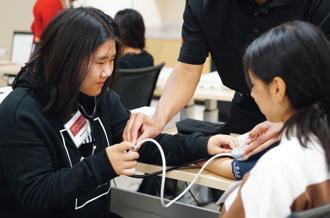

Mann School student members of the Southern California Outreach for Pharmacy Education (SCOPE) developed SCOPE Saturday Academy in fall 2022 to provide high school students from underrepresented and/or marginalized backgrounds an introduction and pathway to pharmacy and pharmaceutical sciences as potential career options.
Fifteen students from four partner schools—Academy of Medical Arts at Carson High School, John C. Fremont High School, Bravo Medical Magnet High School and Woodrow Wilson High School—joined the six-week program as the inaugural class. Over the course of the program, the SCOPE scholars learned about various areas of pharmaceutical research, drug development and pharmacy practice while receiving mentoring and demonstrations in how to conduct health screenings. They also formed mock pharmaceutical companies to successfully bring a pharmaceutical product from early development to market and formulary by the end of the program.
“Creating the program was rigorous but enjoyable,” Luis Larios, PharmD Class of
2025, says. “The hardest part of this program was translating all the clinical, pharmaceutical sciences, regulatory and health economics topics down to the high school level. The content was pretty complex but our scholars are brilliant and caught on quickly. They were eager for more rigorous content.”
USC Mann student leaders in the program in addition to Larios were PharmD students Evans Pope III, Daniella Del Toro, Alexander Cantres, Faith Pogosyan, Siara Magee, Ileeshiah Otarola, Ginika Nwokeabia, Jasmine Gomez Lopez, Karina Huereca, Ilham Batar and Danielle Fletcher-Williams and PhD students Atham Ali and Michelle Kalu, PharmD ’22.

The program is expected to expand to at least 25 high school participants for fall 2023.
“It’s a real win-win,” says Allison Bryant, Mann School associate director of recruitment and outreach. “USC Mann students loved their volunteer experiences and the high school students benefited from their mentorship.”
Two of the five SCOPE high school seniors, Wendi Li and Arizbel Gomez, have been accepted to USC for fall 2023 admission. To get involved, contact Melissa Durham, assistant dean of diversity, equity and inclusion, at mdurham@usc.edu.
30 USC MANN SCHOOL
STUDENTS
Improving Wellness on Campus
The USC Mann School has added an on-site wellness counselor to provide support to students, faculty, staff and other members of the USC Mann community. Veronica Acosta, a graduate of the USC Suzanne Dworak-Peck School of Social Work, is a licensed clinical social worker (LCSW) with six years of medical social work experience, most recently in the emergency department of St. Francis Medical Center in Lynwood, Calif. Here, she shares her background and goals for her new role at the school.
What made you interested in being a social worker?
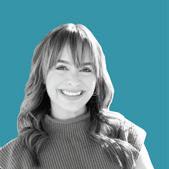
I have always wanted to help people. I grew up in an eight-person home, and we lived in poverty and struggled in a variety of ways. I was guided by a therapist who helped me understand how to cope, find motivation, overcome barriers and process emotions while dealing with the beautiful yet chaotic aspects of life. Obtaining this support early on introduced me to my favorite word—resilience. I believe all humans have the ability to be resilient. We just need support to help us process how to get there. Becoming an LCSW is the greatest act of resilience that I have ever accomplished, and I am happy to share support in any way I can.

Tell us about your most recent experience before joining USC Mann. Working in an emergency department during the pandemic allowed me to realize that there has to be more supportive counseling or mental health accessibility for those in the medical field. COVID affected many of us in an emotional way. I worked closely with physicians, nurse practitioners, physician assistants, trauma physicians and medical technicians who had to cope with their own fears while working on the front lines.
What kind of wellness culture would you like to create at USC Mann?
I want to normalize the stress of being a student while minimizing barriers to seeking support. I want to create a culture in which students are willing to ask for help and feel comfortable reaching out during stressful academic moments. In addition to my 9 a.m.-5 p.m. workweek schedule on the Health Sciences Campus, I am available via Zoom on weekends and evenings. Stress sometimes hinders us from performing at the best of our ability—but using resources, like me, can help students normalize any emotions or feelings that they may have about their academic trajectory.
What do you like to do in your free time?
I am currently training for the L.A. Marathon. I have a supportive partner who I enjoy running, cooking and having funny conversations with. I really enjoy making others laugh.
What else would you like the USC Mann community to know about you and your work?
I am passionate about fostering the wellness and success of others. Feel free to reach out to me at vaacosta@usc.edu. As this is a new position, we will all be learning together how to make sure this is successful.
31 RESULTS SPRING 2023
PHOTO SHOP
For the legendary 1984 Summer Olympics, the University Park Campus housed athletes in the Olympic Village and welcomed nearly 127,000 visitors each day. Some 36 USC athletes won a total of 24 medals during the games. Now, as Los Angeles prepares to host the 2028 Summer Olympics, the Mann School is creating a comprehensive sports pharmacy program that will include sports pharmacy training, a 12-credit certificate, placement of clinical sports pharmacists in the USC Athletics Department, the prevention of doping, and research on the effects of medications and supplements on sports, mental health and andrology (steroids and the reproductive system).

32 USC MANN SCHOOL
COMMITMENT TO COMMUNITY HEALTH
Join the USC Mann School in creating a new pharmacy and health center in the underserved community of South Los Angeles. Your support will help replace a pharmacy desert with an oasis, fostering access to critical healthcare and reducing disparities in health outcomes. Your gift to help launch the USC South Los Angeles Pharmacy will also further our efforts to develop a model that can help solve the national crisis of pharmacy shortage areas in both urban and rural settings.
Help us reach our goal. Give today to the South L.A. Pharmacy Fund. Or text PAA to 41444.
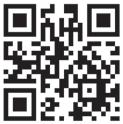
The new South L.A. Pharmacy will build on the school’s long traditions while innovating to revolutionize health. This is about more than just building a single pharmacy. It’s what it could mean to the field and to the patients who will benefit.”
Dean Vassilios Papadopoulos
Gifts of $25,000, $10,000, $5,000 or more by Nov. 30, 2023, will be included on the Founders Wall. Recognition size on the Founders Wall will vary by gift size.
Contact Cheryl Stanovich, chief development officer, at stanovic@usc.edu to make a gift or for more information.

USC Mann School of Pharmacy and Pharmaceutical Sciences
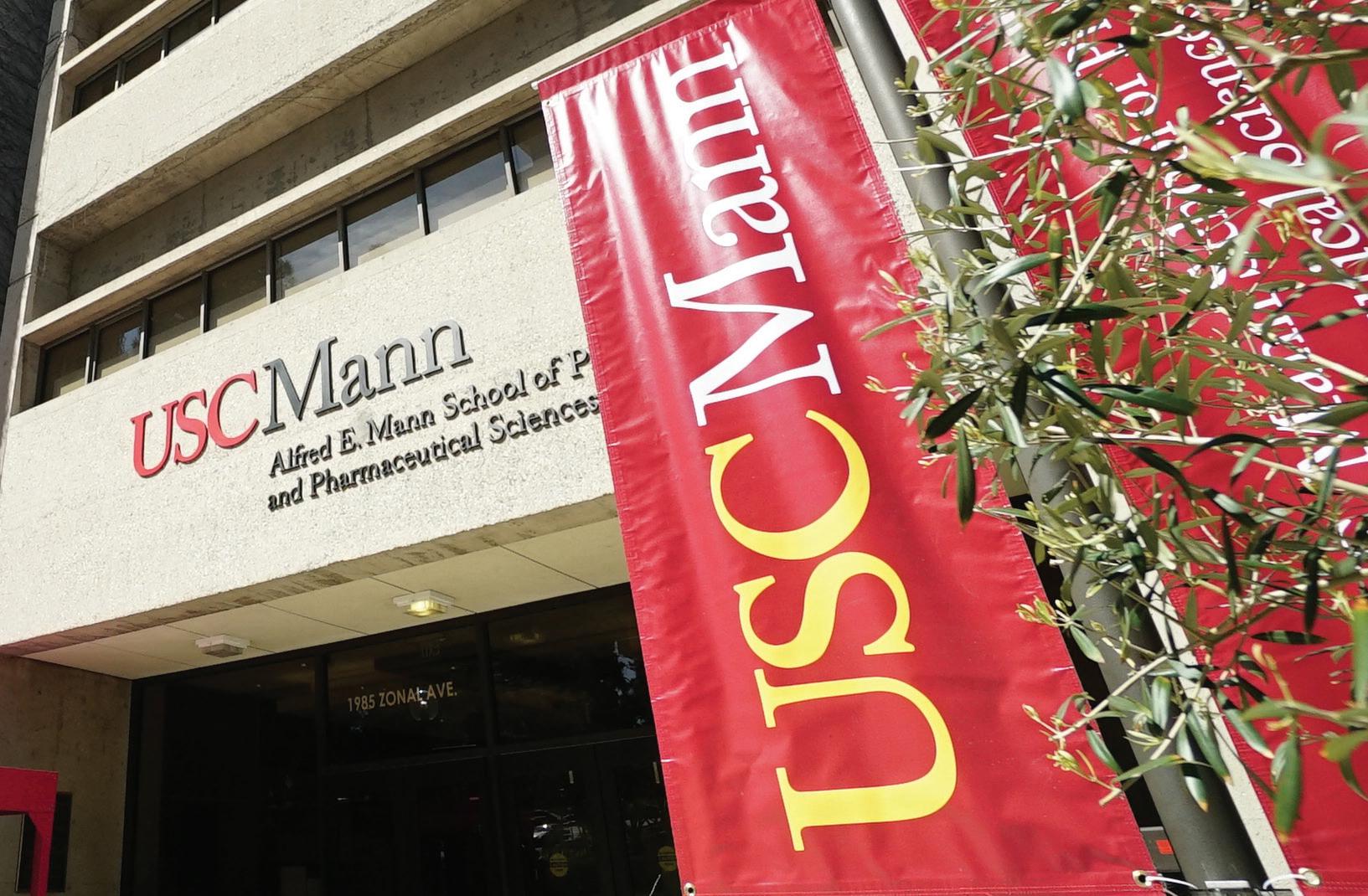
Health Sciences Campus
University of Southern California
1985 Zonal Avenue
Los Angeles, CA 90089-9121
mann.usc.edu
STAY IN TOUCH! Share news, update contact info and follow us on social media.
Nonprofit Organization US Postage
University
Paid
of Southern California
The school’s new signage was unveiled at a celebration on February 8. See more photos from the event on page 18.
 PUBLISHED BY THE USC MANN SCHOOL OF PHARMACY AND PHARMACEUTICAL SCIENCES
PUBLISHED BY THE USC MANN SCHOOL OF PHARMACY AND PHARMACEUTICAL SCIENCES
 ABOUT THE USC MANN SCHOOL OF PHARMACY AND PHARMACEUTICAL SCIENCES
ABOUT THE USC MANN SCHOOL OF PHARMACY AND PHARMACEUTICAL SCIENCES


























































